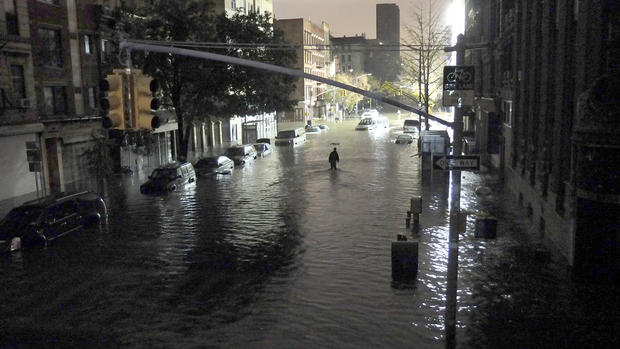Bloomberg: Gas rationing working in NYC, may stay for a while
NEW YORK Mayor Michael Bloomberg says that New York City's odd-even gas rationing plan is working, but he can't say when the restrictions will be removed.
The system began Friday in the city and on neighboring Long Island after Superstorm Sandy disrupted the metropolitan area's gasoline distribution network. Bloomberg estimated that only a quarter of the city's gas stations were open when the policy was set in place. On Friday, license plates ending in an odd number or with a letter could fill up. The next day, plates ending in even numbers or zero were allowed to get gasoline. The following day the cycle repeated. Buses, taxes and limousines, commercial vehicles, people carrying gasoline canisters and emergency vehicles are exempt from the rules.
New Jersey implemented the odd-even plan earlier and is ending it Tuesday morning.
The hours-long lines at New York City gas stations seem to have eased since the rationing began there. But Bloomberg says he's going to leave the system in place "for a while" especially since he estimates the shortages could last another two weeks.
The mayor calls it "not that much of an inconvenience."
Still, some people are trying to beat the system. A 22-year-old man was arrested after he flashed fake Federal badges and tried to cut the line for first responders and cops in Brooklyn, N.Y.
- Gas rationing starts in post-Sandy New York
- Brooklyn "gas guzzler" caught cutting in line, faces felony for trying to beat the system, say cops
Gas still remains a scarce commodity for New Yorkers and New Jersey residents because of many issues including a New Jersey refinery that has been closed since the storm and gas terminals in both states operating at reduced capacity or remaining closed. Some stations still do not have power. It doesn't help that the New York-New Jersey area has less gas stations per capita compared to other major metropolitan areas making the lack of gas a "show stopper," Tom Kloza, chief oil analyst at Oil Price Information Service, said.
The biggest problem lies in the terminals where gas is pumped into tanker trunks. Seven of the 57 terminals are still shut down, while others aren't running at full capacity. New York was especially hit hard by the terminal shut downs, while New Jersey was able to recover quicker due to their proximity to supply areas in Philadelphia which have not been damaged by the storm. Still, this means many tankers are having to travel further to get gasoline to deliver to the stations or have to make more stops. James S. Calvin, president of the New York Association of Convenience Stores, also pointed out that some terminals are rationing how much gas the give to distributors.
After the storm, the gas has gone up 15 cents in New York City, 18 cents in Long Island and 8 cents in New Jersey. The increase becomes more apparent when considering the fact that the national average has dropped 41 cents since Sept. 14. Kloza remains hopeful that drivers in the New York and New Jersey areas should see prices go down in a week or so.

